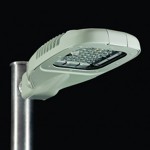
The energy savings benefit of LED’s and adaptive lighting controls have caught the attention of many. As such LED street lighting and adaptive lighting controls are now gaining popularity. To meet the demand for energy efficiency the lighting industry has invested millions of dollars into developing new LED and adaptive control products which offer substantial energy savings through improved optical efficiencies. Energy savings are in the range of 50% to 80% over HPS based on a number of major deployments undertaken throughout North America.
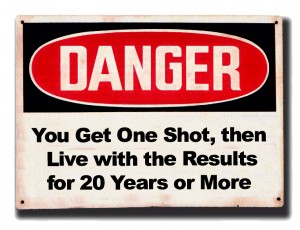 The selection of LED street lighting and controls is a major long term investment. Many suppliers claim to offer maintenance free operation. Is this too good to be true? How does one assess the viability and benefits of this new technology?
The selection of LED street lighting and controls is a major long term investment. Many suppliers claim to offer maintenance free operation. Is this too good to be true? How does one assess the viability and benefits of this new technology?
At this stage in the industry, product cost is a major driving factor in the deployment of LED’s. This is a throwback to the cobra street light industry where products were typically deemed fairly equal, and low cost was the main selection requirement. Now a new way of thinking is required with respect to the selection of LED street lighting as products vary drastically in performance and reliability. Life cycle cost is therefore a key consideration when comparing luminaires.
To assess optical performance of luminaires we use the Unit Power Density (UPD) metric measured in Watts/m². Through extensive analysis we have found the efficiency can vary vastly from product to product therefore using UPD to compare luminaires allows for maximum power savings.
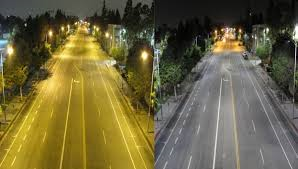 As LED’s are relatively new, their reliability is therefore unproven in the field. To assess reliability of the electronics we use Mean Time Between Failure (MTBF) analysis methods which define and predict reliability and failure rates based on proven industry methods. MTBF is a very important consideration in assessing long term reliability.
As LED’s are relatively new, their reliability is therefore unproven in the field. To assess reliability of the electronics we use Mean Time Between Failure (MTBF) analysis methods which define and predict reliability and failure rates based on proven industry methods. MTBF is a very important consideration in assessing long term reliability.
Correlated Colour Temperature (CCT), drive current, lumen depreciation, luminaire life, unit power density (efficiency), and dimming control options are all variables which require close consideration. In the past 8 years we have gained extensive expertise in these areas.
The optical system for luminaires can vary dramatically from supplier to supplier. Some suppliers use LED chip sets and reflectors while some use chips and refractors while other use recessed refractors and lenses. With the various optical systems, the luminaires are able to produce different visual effects. DMD have a rig (see test rig image below) to mount and view luminaires in their operating position. This allows us to review and assess the various optical system and lighting technologies and glare effects in our shop. Other reviews and assessments undertaken in DMD’s shop includes water intrusion via a power washer, along with a review of the luminaire driver electrical characteristics under various states of loading. Loading states include under voltage events, over voltage events and various levels of dimming (see test equipment image below). We use voltage and amp meters, oscilloscope, power factor meter, light meters along with a Variac transformer to vary input voltages and measure results. As LED’s are new this analysis and testing is key in defining and comparing LED performance and defining issues.
Model specifications are available for LED street lighting, however a strong background in illumination combined with sound knowledge of electronic specifications are required to best define such specifications and to review data submitted by the suppliers. To properly review and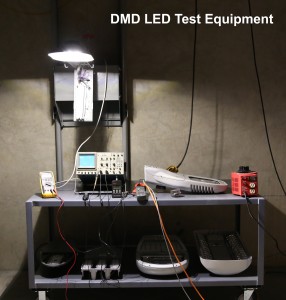 assess products the data submitted by the manufacturers will be extensive and require experience and knowledge to evaluate and rate. Having undertaken numerous projects we have the expertise and experience to review and rate products to get maximum value for your dollar.
assess products the data submitted by the manufacturers will be extensive and require experience and knowledge to evaluate and rate. Having undertaken numerous projects we have the expertise and experience to review and rate products to get maximum value for your dollar.
When designing a lighting system with HPS or MH sources, it was common for the average illuminance level on the street to be greater than recommended levels. This is due to the fact that, of the two criteria for illuminance, the average level was much easier to achieve than the uniformity criteria. Hence the uniformity criteria was often the governing factor for the design and as the pole spacing was tightened to achieve the recommended uniformity, the average illuminance would increase to almost double the recommended level. This phenomenon is characteristic of the ‘lamp and reflector’ technology.
LED street lights do not make use of a ‘lamp and reflector’, instead, they make use of many small point sources which can be individually aimed to distribute light more effectively than the HPS or MH sources, they allow for designs which take advantage of their optical efficiency and improved light distribution. In fact, the 60% plus energy savings on past projects have been as much a result of reducing over-lighting as it is the result of the optical efficiency of LED’s. A potential concern with LED’s is that many suppliers are providing fixtures with extreme cut-off on the house side of the fixture. This can cause the sidewalk to be under lit (thus reducing visibility). Calculations must therefore also be undertaken on the sidewalk to ensure lighting levels are met while at the same time maximizing power savings. In addition not all fixtures perform equally. We have found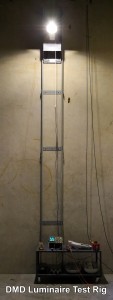 that the photometric performance of LED luminaires can vary greatly depending on road type, number of lanes, pole heights, wattage, etc. On recent past projects for a defined road type with equal geometrics we have found the optimized pole spacing varied from 30m to 60m which shows the varying optical performance. This performance review is key to achieving maximum energy savings. The key is to select optically efficient luminaires which best suit the jurisdictions roads and meet life cycle cost requirements. This will require evaluation and lighting design. Simply selecting a product and replacing fixtures under the rule of thumb: “replace a 100W HPS fixture with a 35W LED fixture” without proper design and analysis will increase risk and liability.
that the photometric performance of LED luminaires can vary greatly depending on road type, number of lanes, pole heights, wattage, etc. On recent past projects for a defined road type with equal geometrics we have found the optimized pole spacing varied from 30m to 60m which shows the varying optical performance. This performance review is key to achieving maximum energy savings. The key is to select optically efficient luminaires which best suit the jurisdictions roads and meet life cycle cost requirements. This will require evaluation and lighting design. Simply selecting a product and replacing fixtures under the rule of thumb: “replace a 100W HPS fixture with a 35W LED fixture” without proper design and analysis will increase risk and liability.
With any LED conversion project the key is to define what lighting criteria (light levels, uniformity and veiling luminance) are required for roadways and sidewalks, what exists and what new fixtures can be applied (wattage, colour temperature, distribution, driver current). Adaptive lighting levels and dimming schedules can also be applied to further increase energy savings. To define existing lighting levels DMD use existing drawings, maps and City GIS lighting data to undertake an assessment of the existing lighting system. To maximize benefit, we define what exists and what is required in terms of lighting levels. As LEDs distribute light very differently than HPS and MH sources, this review ensures lighting levels are achieved, thus reducing liability and risk to the City.
Undertaking a conversion to LED and / or adaptive controls represents a large financial investment. From a financial assessment standpoint we can provide the required analysis. Return-On-Investment (ROI) and payback are assessments many owners require before making the switch to new technologies such as LEDs and controls. To define these an engineered approach is needed. DMD have the background and experience to undertake such analysis.
In addition, DMD have undertaken hundreds of designs involving LED lighting. Our staff stays on top of the technology curve by working closely with manufacturers and the Illuminating Engineering Society (IES) lighting committees. As well, DMD have developed industry standards and practices focused on LED and adaptive lighting controls. Recent national publications authored by DMD include the Transportation Association of Canada (TAC) Lighting Reduction and Energy Efficiency Guide and the US Federal Highway Lighting Design Handbook. In terms of policy and practices DMD has developed the Light Efficient Community Policy for all City of Edmonton owned lands and properties including all outdoor road right-of-ways, building facades and exteriors, outdoor facilities, parklands and other City owned lands. This project involved research, investigation and recommendations of best practices for the efficient use of lighting with respect to light pollution, power consumption, reduction in green-house gases, and provisions for public health and safety. The research and investigation undertaken in these documents has added to the knowledge and expertise of the DMD staff.
With respect to adaptive lighting DMD have been involved in many pilot projects & studies and understand the specific requirements of the deployment. DMD has a test road outside of its office with LED luminaires equipped with an adaptive sys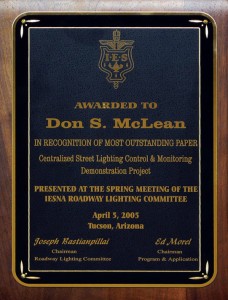 tem where light levels can be adjusted and viewed to observe the effects of dimming on an actual roadway. We can vary the lighting levels via our computer controlled adaptive lighting system which allows clients to review and assess the effects first hand.
tem where light levels can be adjusted and viewed to observe the effects of dimming on an actual roadway. We can vary the lighting levels via our computer controlled adaptive lighting system which allows clients to review and assess the effects first hand.
DMD have been very involved with and have pioneered the overall development of adaptive lighting controls including the development of the BC Hydro Adaptive Street Lighting Guide (2009) and other guides which define attributes, communications topologies, functions, system operation, monitoring, etc. along with key design considerations. Our expertise dates back to before 2005 where we won an IES award for our adaptive lighting demonstration project. Since then, we have continued to play an integral part in the development of adaptive controls. If adaptive lighting is not installed then the luminaires can still be enabled to accommodate an adaptive lighting system in the future simply by plugging the adaptive lighting control node into the dimming enabled fixture. We will apply this knowledge gained such that choices and options can be defined up front in the process.
The validation of the performance of lighting is a key consideration when undertaking the major investment of an LED Conversion. How do you know your system is performing as designed? What are your pre and post LED conversion lighting levels? DMD have defined lighting levels on past projects in the Vancouver area, Edmonton, Grande Prairie, Medici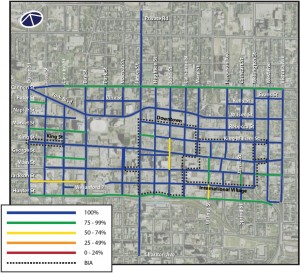 ne Hat and Hamilton. To assess existing lighting infrastructure and lighting levels, two main methods exist. One is based on lighting calculations and the other is based on field measurements via a mobile measurements system mounted on a motor-vehicle. DMD has extensive experience using both methods to assess, measure and document existing lighting levels within a city. The information can then be utilized to create a visual display that tells the whole story about the city. Results could be presented in a colour coded map along with a spreadsheet and compared to the required light levels. The map can provide a snap shot of the state of the lighting before and after conversion. For such a large investment it make sense to verify results to ensure lighting requirements are achieved.
ne Hat and Hamilton. To assess existing lighting infrastructure and lighting levels, two main methods exist. One is based on lighting calculations and the other is based on field measurements via a mobile measurements system mounted on a motor-vehicle. DMD has extensive experience using both methods to assess, measure and document existing lighting levels within a city. The information can then be utilized to create a visual display that tells the whole story about the city. Results could be presented in a colour coded map along with a spreadsheet and compared to the required light levels. The map can provide a snap shot of the state of the lighting before and after conversion. For such a large investment it make sense to verify results to ensure lighting requirements are achieved.
Experience and understanding of the issues is very important when undertaking a lighting conversion. DMD have the knowledge and experience to maximize benefit and reduce risk. DMD have a long list of recent projects involving LED and controls. Recent DMD projects involving LED and adaptive lighting controls specifications, selection, standards, evaluation and field testing are as follows:
- City of Surrey LED Conversion (2015-2016) – 2500 lights
- Town of Tecumseh, Ontario LED Conversion (2015-2016) – 2400 lights
- Barbados LED Conversion (2015-2016) – 30,000 lights
- City of Burnaby LED Conversion (2015) – 10,000 lights
- Assisted in the Development of the Local Authority Services (LAS), Ontario – LED Conversion RFP currently out for tender (2014) – Estimated over 100,000 lights
- Developed Province of BC Contract Supply Arrangement (CSA) LED Specifications and undertook Product Evaluation and defined products on current CSA list (2013-2014) – Estimated over 100,000 lights over 5 years
- City of Calgary LED Specifications, Product Evaluation and LED Conversion (2013-2014) – 25,000 lights phase 1 and 78,000 lights phase 2
- City of Thunder Bay LED Specifications, Evaluation and Conversion (2013-2014) – 3,000 lights
- City of Cranbrook LED Conversion (2014)- 2,000 lights
- Grande Prairie standards, Inventory of Lighting Levels and LED Feasibility (2014) – Measured and record lighting levels for over 10,000 lights on over 450km of roads and streets
- City of Lethbridge Street Lighting Standards, LED Specifications, Evaluation and Conversion (2013) – 10,000 lights
- City of Medicine Hat LED Specifications, Product Evaluation and LED Conversion (2013-2014) – 10,000 lights
- Arthur Laing Bridge LED Lighting Conversion, Richmond, BC (2012) – 150 lights
- Weigh Scale LED Lighting Pilot Project (2012) – 100 lights
- New Brunswick Power Province Wide LED Conversion Specifications and Evaluation (2011) – 80,000 lights
- Nova Scotia LED Pilot and Evaluation Project (2011) – 2000 lights
- NRCan (CICP) LED and Adaptive Lighting Pilot and Review (2012) – 200 lights in 20 cities
- City of Surrey LED Specifications and Feasibility Study (2013) – 20,000 lights
- City of Edmonton LED Specifications (2011) – 38,000 lights converted to date
- City of Hamilton LED Review and Feasibility/Cost Benefit Study (2010)
- Union of Nova Scotia Municipalities LED Review and Feasibility/Cost Benefit Study (2010)
- City of Fort St. John LED Specifications and Evaluation (2012) – 1,000 lights
- City of Coquitlam LED Pilot, Specifications, Evaluation and Field Testing (2011) – 100 lights
- City of Surrey LED Specifications, Luminaire Evaluation and Field Testing (2011) – 100 lights
- BC Hydro PowerSmart Adaptive Lighting Feasibility Studies (2008) – Over 100,000 lights
- City of Calgary Adaptive Lighting Pilot Project (2008) – 100 lights
- BC Hydro Power Smart Prince George Adaptive Lighting Pilot and Evaluation (2006) – 500 lights
- NRCan Adaptive Lighting Study and Evaluation for 20 Canadian Cities (2009) – 200 lights
- City of Burnaby Adaptive Lighting Feasibility Study (2006) – 10,000 lights
Another task that should go hand in hand with an LED conversion, is that a City will need to consider updating their current design and material street lighting standards to accommodate LEDs. This will allow development and city road works projects with new or modified lighting to be designed to current LED standards using products compatible with the LED conversion. DMD have prepared numerous standards which can be custom tailored to the City.
From assessment of existing infrastructure and light levels, to design, to specifications, to product evaluation, DMD have all the bases covered. LED conversions range from numerous projects to hundreds of thousands of luminaires. We have worked with GIS systems and shape files to extract the required data. Design work includes both thousands of lighting designs, and authoring numerous national lighting design publications in Canada and the US. Evaluation includes all major supplier’s LED products. Specifications work includes numerous specifications for numerous conversions in many areas.
For further information contact Don McLean at don@dmdeng.com or call at 604.589.9010 local 201.












